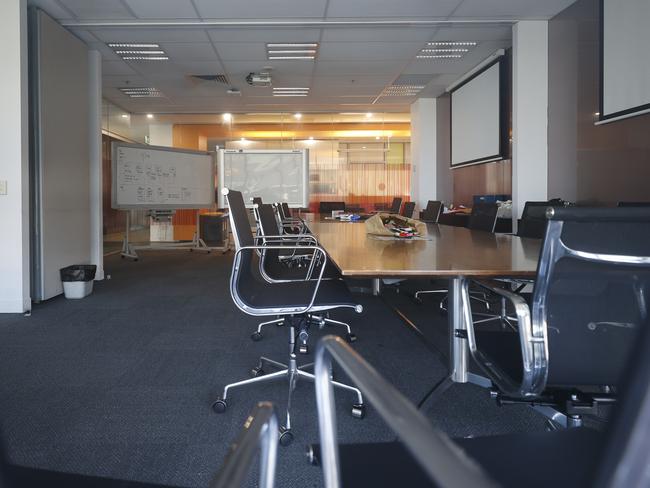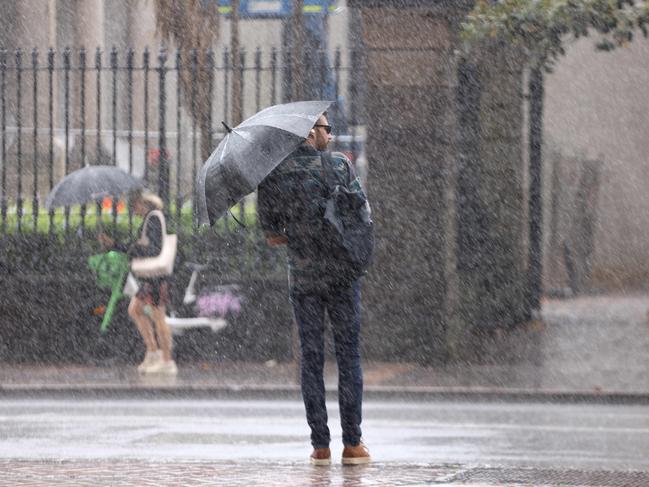Telling new figures reveal just how many businesses in Australia are forcing workers back into the office full-time
The so-called death of working from home has been a hot topic amongst Australians in the post-pandemic era. But new figures paint a very different picture.
At Work
Don't miss out on the headlines from At Work. Followed categories will be added to My News.
The so-called death of working from home has been a hot topic amongst Australians in the post-pandemic era.
Large corporations like Amazon, Tabcorp, Woolworths, and Coles have consistently made headlines for tightening the reins on remote work.
But new research suggests those companies may be outliers.
A national survey of nearly 1000 HR professionals by the Australian HR Institute (AHRI) indicates the trend is, if anything, moving in the opposite direction.
The number of organisations mandating three to five days in the office has also dropped from 48 per cent in 2023 to 44 per cent in 2025. Meanwhile, the proportion of employers with no office attendance requirement at all has grown from 25 per cent to 28 per cent.
Some data points suggest a mild rebound in office time, with figures indicating the average number of weekly hours worked from home dropped from 24.4 in 2021 to 18.9 in 2022.
A separate poll of 500 Australian employers found the average number of in-office days had risen from 3.43 in 2024 to 3.64 this year.

“The research shows no evidence of a shift back to the physical workplace,” AHRI chief executive Sarah McCann-Bartlett said via the Australian Financial Review.
According to the survey, several Aussie businesses see hybrid work as a legitimate boost to performance, with thousands of Aussies claiming the freedom of cutting out their commute makes their lives much less stressful.
The annual costs associated with travelling to work were also put in the spotlight during the pandemic era as workers saved at record pace. Now, as the cost of living continues to chip away at the nation’s disposable income, employees in jobs that can be completed behind a desk are gunning for long-term work from home arrangements in an effort to save for the future.
Roughly 45 per cent of respondents in the AHRI survey said hybrid working had a positive impact on productivity, while just 11 per cent thought it had a negative effect.


One such advocate is David Portway, head of culture at engineering firm NDE Solutions, where the approach is “fully flexible.” Staff and their managers decide when and where work happens. “We’re not focused on time in the office.
“We’re focused on what the outcomes are,” Portway said. The model has helped staff align their work and personal lives, and made recruitment easier, too.
Still, mandates haven’t disappeared altogether.
The most common hybrid policy remains a minimum of three days per week in the office — held by 30 per cent of employers in 2025, which is down slightly from 32 per cent in 2023.
The upcoming federal election could also shuffle those figures around.
The Coalition has pledged to end flexible arrangements for government employees if it wins in May, a proposition that has polarised the public sector.
Shadow Finance Minister Jane Hume whittled down the issue and claimed the policy “reflects the arrangements for everyone else outside of the Australian Public Service”, while Peter Dutton has similarly pressed the issue in the lead-up to the election.
Assistant Minister to the Prime Minister Patrick Gorman, smashed the Liberal Party’s pledge to cut work-from-home arrangements earlier in March.
“This policy is a stinker,” Mr Gorman told Sky News Australia. “They’ve only got three policies and they all stink.”

It all comes as the commercial office sector in Australia is experiencing a turbulent shift.
While the impact of remote working on office occupancy rates remains a key theme, the sector has found some signs of resilience, particularly in high-amenity spaces close to transport hubs.
But the overarching narrative remains uncertain, as corporate hubs, Australia’s capital cities, get compared to “ghost towns”.
An Office Market Report from the Property Council of Australia released in February painted a mixed picture.
On one hand, leasing activity has picked up and there are signs of increased momentum, especially in areas with convenient public transport connections.
The shift back to office spaces is “pointing in the right direction”, according to Property Council President Carmel Hourigan, quoted in the AFR.
But even with some encouraging signs, the sector continues to face serious pressure, with vacancy rates hovering at their highest levels since the early 1990s recession.
For commercial real estate giants, the real sting is in the incentives and rebates offered to tenants — which are often as high as 40 per cent off nominal rent for long-term leases.
Another important factor is that the crisis of office real estate isn’t exactly devastating for everyone involved.
The major casualties are commercial landlords, real estate moguls and investors who rake in eye-watering profits from a booming commercial real estate sector.
A recent survey conducted by KPMG, the 2024 Global CEO Outlook, found that 83 per cent of CEOs expected a full return to the office within the next three years.
But for regular workers, the rise of WFH has been a long-overdue win.
What are your thoughts? alexander.blair@news.com.au
Originally published as Telling new figures reveal just how many businesses in Australia are forcing workers back into the office full-time



